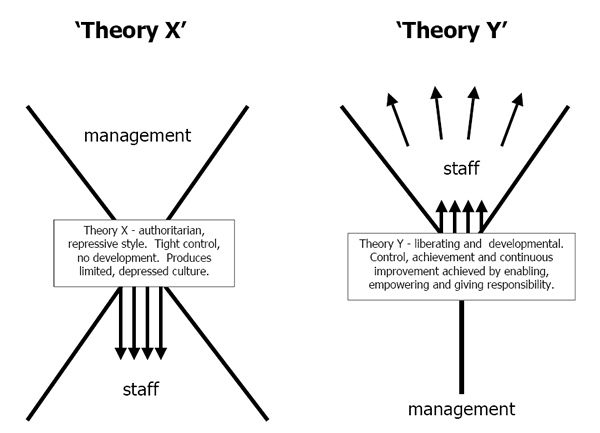HRM

Job analysis can be explained as “a process of studying and collecting information relating to operations and responsibilities of a specific job” (Giri, 2008, p.69). To put it simply, as the name implies job analysis is establishing requirements associated with a job. Considered to be a foundation of HRM, specific aspects of employment covered by job analysis includes training and development needs, compensation and benefits, health and safety aspects of the position, as well as, legal considerations. The importance of job analysis is closely associated with the possibility of filling a position with the most suitable candidate. In other words, jobs analysis needs to be conducted so that a set of skills and competencies needed to perform duties of a position can be established and the same set of skills and competencies can be used as criteria for the search of appropriate candidates. A high level of importance of job analysis in practical levels can be explained by referring to the real life case study of internet company Yahoo! Specifically, Carol Bartz has been named Yahoo! CEO on January 2009, despite lacking experience of leading an internet-based company, only to be removed two years later due to systematic failures. This situation could have been avoided by appropriately conducting a job analysis for Yahoo! CEO position, as such analysis would have identified previous experience of leading an internet company as a compulsory requirement for candidates. Job Analysis Process, Job Description and Job Specification The process of job analysis can be divided into the following five stages: Planning the job analysis. This initial stage commences with the identification of objectives and seeking co-operations from stakeholders involved. Preparing for and introducing job analysis. This stage is marked with the selection of jobs to be analysed and the formulation of a relevant methodology…

There is a range of factors related to various stages of the implementation of employee training and development programs that impact on the level of training transfer. Individual differences associated with trainees is a major factor affecting the nature of comprehension of training programs by trainees, and ultimately, training transfer. Trainee individual differences might be based upon personal temperament, cultural background, life experiences etc. The level of trainee motivation to participate in the training and to gain necessary knowledge and skills is a decisive factor in training transfer. Nevertheless, the impact of this specific factor can be influenced by organisations in a great extend, in a way that managers can communicate advantages of scheduled training courses for employees in professional and personal levels in order to increase the level of their motivation. Moreover, the level of competency of trainers also plays a significant role in training transfer as highly competent trainers are able to maximise the levels of training transfer through their advanced communication skills and an efficient use of learning materials. Criteria to assess the level of competency of trainers include but not limited to formal qualifications, the years of experience in industry, feedback from other clients etc. An environment where the training session is facilitated has to be mentioned as a separate factor affecting the level of training transfer. Learning environments where trainees feel comfortable and free of pressure are associated with a positive contribution to the level of training transfer. According to the Principle of Identical Elements discussed above learning environments that resemble the actual working environment for trainees make significant positive contribution on the overall outcome of training program, as well as, on the level of training transfer. Importantly, organisational culture also impacts the degree of training transfer for employees. Organisational culture can be explained…

Cognitive Theory, more recent theory compared to alternative theories of training transfer is based on the assumption that focus on individual’s mental models, comprehension and retention of information is a matter of significant importance in terms of increasing the levels of training transfer. A popular example for the use of cognitive approach in training programs relates to the integration of mental tasks and challenges with the training process, so that program participants learn the core principles of the training program though solving those mental tasks and challenges. A high level of applicability of cognitive theory to all types of training programs is the main advantage of the theory.

According to The Stimulus Generalisation Theory important knowledge and skills gained as a result of training can be applied to a wide range of situations in the workplace. In other words, in contrast to The Principle of Identical Elements “stimulus generalisation occurs when the trained behaviour is utilised under conditions that differ from those used in training” (Nadeau et al., 2000, p.255). For example, advanced level of interpersonal skills gained by an employee as a result of training is going to be applied with adjustments taking into account circumstances associated with a specific workplace situation. The employee is going to adjust own interpersonal skills depending on the type of organisational stakeholder the employee is interacting with. The Stimulus Generalisation Theory of training transfer is best related to workplace situations that are highly dynamic and unpredictable. References Nadeau, S.E., Crosson, B.A. & Gonzalez-Rothi, L. (2000) “Aphasia and language: theory and practice” Guliford Press

The Principle of Identical Elements introduced by Thorndike and Woodworth (1901) states that the level of training transfer depends on the level of similarity between training and performance environments. In other words, the theory states that there is a positive correlation between the similarities between training and performance environments and the level of training transfer. For example, in a cross-cultural awareness training arranging role playing games where individuals have to interact with the representatives of various cultural backgrounds in typical working environments would have a positive contribution to the levels of training transfer. The essence of the Principle of Identical Elements can be explained in a way that “the more elements (i.e., content and procedure) of one situation are identical to the elements of a second situation, the greater the transfer, and thus the easier learning in the second situation” (Tracey and Mandel, 2012, p.44). Al-Araimi (2011) argues that the level of applicability of The Principle of Identical Elements in limited within organisations that have predictable and stable work environment. References Al-Araimi, F. (2011) “Power of Human Resources” Author House Tracey, D.H. & Mandel, L. (2012) “Lenses on Reading: An Introduction to Theories and Models” Guilford Press

Training transfer can be defined as “the degree to which trainees effectively apply the knowledge, skills, and attitudes gained in a training context to the job and maintained over time” (Handy, 2008, p.4). An alternative definition of the term has been proposed as “the ability of trainee to apply the behaviour, knowledge, and skills acquired in one learning situation to another” (Business Dictionary, 2012). Training transfer is divided by Werner and DeSimone (2008) into three categories: positive, zero, and negative. Positive transfer is associated with the improvement of job performance as a result of undergoing training. Zero transfer occurs in situations where training results in no impact in job performance. In negative transfer, on the other hand, the experience of undergoing training would be associated with negative implications on employee job performances. Alternative classification of training transfer relates to near versus far forms of training transfer (Al-Arami, 2011). In near transfer employees are able to apply knowledge and skills gained during the training to their job promptly in a direct manner. Far transfer instances, on the other hand, involve situations where knowledge and skills gained during the training process need to be applied by employees with a substantial level of adaptation taking into account unique aspects of their profession and organisation. For example, application of the knowledge in the workplace about the use of new computer software learned in a training session can be mentioned as an example for near transfer, whereas the application of assertiveness skills gained in training would illustrate far transfer. Saks and Belcourt (2006) point to the sampling issues associated with training transfer studies. Specifically, Saks and Belcourt (2006) convincingly argue that the majority of studies addressing the issues of training transfer have been conducted relying on specific individuals and certain training programs, thus sampling aspect…
By John Dudovskiy
Category: HRM

Bruce and Pepitone (1999) propose an interesting viewpoint according to which managers cannot motivate employees; managers can only influence what employees are motivated to do. The role of facilitating quality subordinate-superior communication at various levels effectively employing a wide range of communication channels has been praised by Shields (2007) in terms of its positive contribution in boosting employee morale. Shields (2007) stresses two specific advantages of such a practice that relate to offering employees a chance to raise their concerns and put across their points regarding various aspects of their jobs, as well as, supplying them with the feeling of engagement and appreciation. According to Lockley (2012) offering training and development programs that effectively contributes to personal and professional growth of individuals is another effective employee motivation strategy. At the same time, Lockley (2012) warns that in order for motivational aspects of training and development initiatives to be increased, ideally they need to be devised and implemented by a third party with relevant competency and experience. Alternative working patterns such as job-rotating, job-sharing, and flexible working have been branded as effective motivational tools by Llopis (2012). Moreover, Llopis (2012) argues that motivational aspects of alternative working patterns along with its other benefits are being appreciated by increasing numbers of organisations, however, at the same time; many organisations are left behind from benefiting from such opportunities. An interesting viewpoint regarding the issue has been proposed by Wylie (2004), according to which members of management primarily should be able to maintain the level of their own motivation at high levels in order to engage in effective motivation of their subordinates. Accordingly, Wylie (2004) recommends managers to adopt a proactive approach in terms of engaging in self-motivation practices. Furthermore, Wylie (2004) recommends concentrating on specific variations of intangible motivational tools such as celebrations…
By John Dudovskiy
Category: HRM

Theory X and Theory Y framework proposed by McGregor in his classic book The Human Side of Enterprise (1960) consists of two alternative set of assumptions. Theory X percieves employees to be lazy, irresponsible and untrustworthy, while according to theory Y employees are approached as one of the most valuable assets of the company. According to Theory X assumptions employees do not like their work, they lack ambition and responsibility and employees prefer to be led rather than leading others. Theory X assumes average human being to dislike the work and avoid it whenever possible. The following statements relate to Theory X assumptions: Most people must be controlled and threatened so that they can produce an adequate level of output Responsibility is avoided by an average human who desires security above all An average human being has a little ambition and has to be closely supervised at all times Theory Y set of assumptions, on the other hand, is based upon the idea that employees are generally enthusiastic about their work, they are creative and self-directive, and also employees readily accept responsibility. Theory Y is based on the following alternative assumptions: The expenditure of physical and mental effort in work is as natural as play or rest Methods of making people work are not limited to control and punishment, high level of commitment in organisational aims and objectives can result in self-direction Commitment to organisation can be achieved by designing satisfying jobs If proper conditions are created, an average human can not only learn how to take responsibility, but he can also learn to seek responsibility In practical levels, McGregor’s Theory X and Theory Y framework aims to demonstrate the potential of employees that organisations should recognise so that the level of organisational efficiency can be increased. However, as…

Thomas (2009) offers a comprehensive analysis of issues associated with intrinsic motivation at work. The author argues that “intrinsic rewards come to workers directly from the work they do – satisfactions like pride of workmanship or the sense that they are really helping customers” (Thomas, 2009, p.13). Three C’s of intrinsic motivation have been identified by Kohn (1993) as collaboration, content and choice. Specifically, according to Kohn (1993), collaboration involves creating an atmosphere where employees can cooperate with each-other as team members, whereas, content relates to understating the manner in which any specific job adds value and contributes to the achievement of organisational objectives. Choice element of intrinsic motivation, on the other hand, involves providing greater freedom and autonomy to employees in terms of dealing with their responsibilities, and increasing the level of their involvement in decision-making. It is important to note that although the theoretical framework of three C’s of intrinsic motivation has been introduced by Kohn (1993) almost two decades ago; it is still adequately relevant in modern work environment. References Kohn, A. (1993) “Punished by Rewards: The Trouble with Gold Stars, Incentive Plans, A’s, Praise, and Other Bribes” Thomas, K.T. (2009) “Intrinsic Motivation at Work: What Really Drives Employee Engagement” 2nd edition, Berrett-Koehler Store
By John Dudovskiy
Category: HRM

Intensifying forces of globalisation have caused the numbers of expatriates to increase in many counties around the globe. An expatriate is anyone “living or working in a country of which he or she is not a citizen and who can be classified as possessing skills critical to the success of the performance of foreign subsidiaries” (Weber, 2011, p.1). While the skills and competencies brought by expatriates can be highly beneficial for businesses, as well as, for the development of a host country economy; expatriate human resources are influenced by a range of factors. This article analyses the influence of international perspective of employment laws on expatriate human resources. Specific issues discussed in the article include labour law, expatriates, and the impact of legislations issued by international bodies upon expatriate human resources. Labour law and expatriates Specific issues covered by labour law in HR include recruitment and selection, pay and benefits, employment rights, employment contract, provision of training and development, assurance of equal opportunities for all employees, health and safety issues etc. Each of these issues can be analysed from the spectre of expatriate human resources. Recruitment and selection of expatriates differs from recruitment and selection of resident candidates in a way that specific attention needs to be paid to the issues of adaptability to a new culture, candidate’s level of cross-cultural awareness in general, and the level of empathy to the local culture in particular, family situation of candidates, his or her language skills etc (Briscoe et al., 2008). The issues of pay and benefits, as an important aspect of employment covered by employment law represent another point where expatriate human resources are directly influenced. Specifically, a set of related issues such as medical insurance of expatriates and their retirement plans are regulated to the labour law of local…
